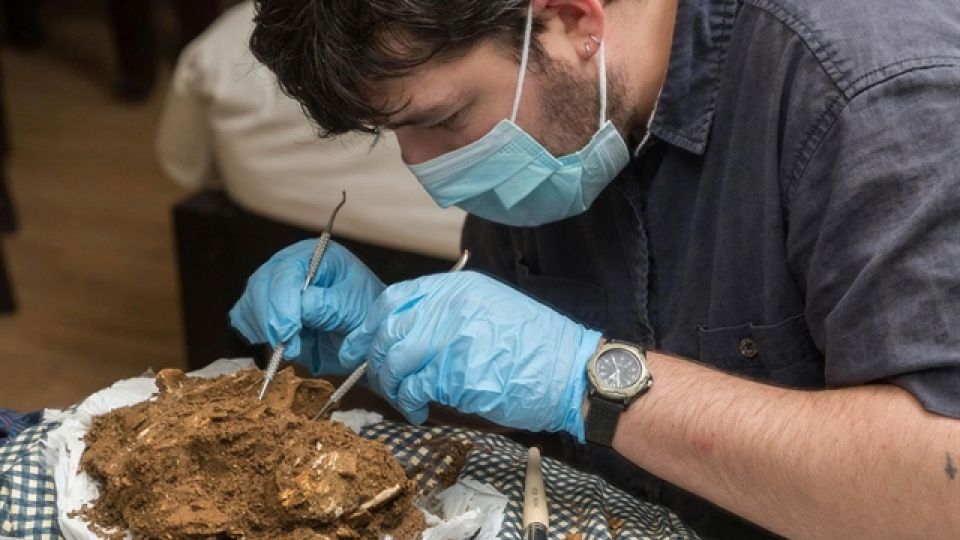September 9, 2025
NINH BINH – A human skeleton dating back more than 12,000 years has been found in the Tràng An Scenic Landscape Complex, a UNESCO World Heritage site.
Ninh Bình Province’s Department of Culture and Sports said the skeleton, named as TBH1, was discovered in Thung Bình 1 Cave, part of the Tràng An Cultural and Natural Heritage site, within the implementation of the SUNDASIA archaeological project.
It was unearthed in a crouched position, likely due to being tightly wrapped during burial. The skull was shattered by a rock falling from the cave ceiling, but it was still sufficient to reconstruct nearly the entire structure, including the dental system.
The scientists have revealed valuable information about the finding.
They said it was the skeleton of a strong man, about 1.7 metres tall who died at the age of 35. It is exceptionally well-preserved and has been dated to be about 12,000-12,500 years old.

The skeleton was discovered in Thung Bình 1 Cave, part of the Tràng An Cultural and Natural Heritage site, within the implementation of the SUNDASIA archaeological project. PHOTO: COLLECTED/VIET NAM NEWS
This important discovery provides new evidence and insights in the fields of archaeology, anthropology, genetics and the social interactions of prehistoric communities in Việt Nam and Southeast Asia.
Scientists have determined that the cause of death for this man was due to an injury to the upper ribs near the collarbone, inflicted by a sharp tool made of quartz, which subsequently led to an infection.
After the injury, this man may have survived for several weeks to months before passing away. According to the researchers, the trauma and subsequent infection are the likely cause of death and the earliest indication of interpersonal conflict from mainland Southeast Asia.
The analysis of the skull morphology of this skeleton also confirms that he was a native hunter-gatherer closely related to Southeast Asian communities.
The skeleton is well-preserved in the cave environment, allowing researchers to examine various models of biological relationships and obtain the oldest mitochondrial DNA evidence ever known in Việt Nam.
The mitochondrial DNA analysis of this skeleton reveals that the ancient individual from Thung Bình 1 belongs to the M branch (macrohaplogroup M) of the indigenous lineage, showing genetic connections to early hunter-gatherer communities in Southeast Asia and South Asia.
Information about TBH1 has been published in the prestigious global scientific journal Proceedings of the Royal Society B (2025).

Elements of TBH1 in anatomical position. PHOTO: COLLECTED/VIET NAM NEWS
According to Ninh Bình Department of Tourism, the discovery not only enriches the body of knowledge about prehistoric humans in Việt Nam, but also contributes to a broader understanding of human evolution in Southeast Asia, a region considered a crucial crossroads for global migration waves.
The skeleton allows scientists to gain insights into the morphology, health and pathology of late Pleistocene inhabitants, provide the oldest genetic data in Việt Nam, helping trace connections between indigenous hunter-gatherer communities and later populations and offer the first evidence of human violence in Southeast Asia, suggesting that social conflict may have emerged early among hunter-gatherer groups.
With its outstanding archaeological and anthropological value, TBH1 is regarded as a groundbreaking discovery that opens many new avenues for research into prehistoric humans in Việt Nam and Southeast Asia as a whole.


